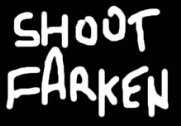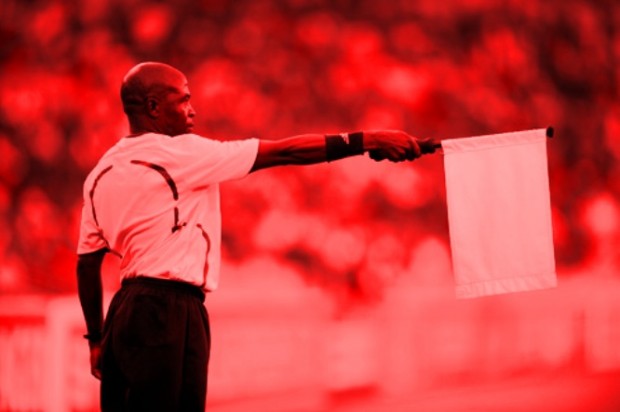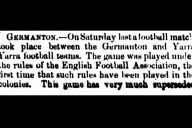I was schooled in the beauty of a well-sprung offside trap from an early age.
My childhood memories are scant, but those that seemed to have left a lasting impression mostly involve football. My family moved from the well-to-do Melbourne suburb of South Yarra to the less-well-to-do bayside suburb of Seaford when I was about five years old, just in time for me to start primary school, and also just in time for me to start playing junior club football.
Hard-working migrants from Hungary, my parents had finally scratched together a deposit for a home after renting in St Kilda and then South Yarra. “No more renting,” my mother had insisted. “We buy a house like a proper family.”
The story goes that the options had been to move to the new estates out in the western suburbs, specifically St Albans, or to the new estates out in the southern suburbs, specifically Seaford, not far from Frankston.
According to my father, we moved to Seaford because my mother didn’t want us growing up in a suburb full of migrants. She wanted us to have a chance at being Australian. This coming from the woman who regularly let it be known Australians were durva féleszűk (crass halfwits). Being an equal opportunity racist, however, she also let it be known she thought most migrants were primitív parasztok (primitive peasants).
Moving to Seaford was a big disappointment for my father. As a football-mad Hungarian, he was well aware that all the action was in the northern and western suburbs, with its large communities of Greeks, Italians, Croatians, Serbians, Poles and whoever else had crammed on ships from Europe in the past 25 years (this was the mid-70s) of mass migration to Terra Australis.
To him, the southern suburbs were a barren wasteland populated only by strange large oval fields with four sticks at each end.
Nevertheless, probably before even enrolling in the local Catholic primary school, I was registered to play under 7s at Seaford United Soccer Club. My father had found a refuge, in among the wonderfully bawdy Poms and joyously drunk Scotsmen who made the club and its boisterous front bar tick, and I had found my first football club, wearing the club’s yellow and black proudly for the next few years.
Another stroke of good fortune came when the area’s biggest senior club, Frankston City, gained promotion to the Victorian State League in 1977. The club’s promotion was probably aided by the exodus of top clubs that year from the State League to the newly formed National Soccer League.
With the likes of South Melbourne Hellas, Footscray JUST, Fitzroy United Alexander and Mooroolbark (yes, Mooroolbark) gone, Frankston City could take its place among the likes of Juventus (the club my father had played for in the late ’50s and early ’60s), Preston Makedonia and Essendon Lions (Croatia).
I would play two or sometimes even three games on Saturday and then on Sunday we would go watch Frankston City play, unless there was an especially good NSL match on at South Melbourne’s Middle Park or at Olympic Park.
Watching a match with my father was far less about what we are now told is “fan culture” and far more about quietly and studiously picking apart the flows and currents of what was happening on the ground. In all my years watching football with him, it was rare to hear him scream or get demonstrative about much — he was definitely not the “shoot farken” type!
He would tense up and phantom kick a ball on occasion, but he was not there to wave flags or chant. He was there to marvel at the game that had been his obsession his whole life; the sport that provided escape and normalcy during a childhood pockmarked by war and revolution.
One such occasion at which to marvel was when Altona City (in their distinctive yellow and maroon strip) came to play Frankston City (for some reason though, Frankston played their home matches at Seaford that season). I can’t remember if this was a league or cup game, but what I can remember is that it opened my eyes to the Rubik’s Cube-like splendour of a masterfully deployed offside trap.
Quite simply, I had never seen such a relentless display of guile and cunning.
Altona’s well-drilled back four would push out with such speed and unison that Frankston City’s attackers would be left for dead, like deer in headlights waiting for the linesman’s flag to repeatedly seal their fate. It was as if Altona’s defence was connected by a taut piece of string which pulled the players forward towards the halfway line, devilishly certain their ploy would succeed each and every time.
And in this match it did. Altona City 4 – Frankston City 0.
I can even now see the rickety wooden scoreboard with its metal numbers and club names, reading 4-0. But the score was made even more embarrassing for the home team by the fact they had been so comprehensively outplayed and outwitted.
I remember my dad quickly twigged to the con Altona’s backline was running. For him, it was like watching someone count cards at a casino blackjack table and take the house for a ride — it was more fun to watch than the four goals Altona scored.
In years to come, playing as a sweeper (remember those guys) or full-back, I learned to appreciate even more what I had seen that day, in a match between two middling Victorian State League teams, at a small suburban ground with maybe 200 people in attendance. The discipline and communication between those defenders, the acute sense of timing of the centre back who had marshalled the line with such precision and ferocity, these were things to be admired and appreciated.
For fans like my dad, offside traps and 0-0 draws are not negative things to be banished from the game because casual fans get bored; they are bitter sweets to be savoured, difficult passages and complex parts of the Beautiful Game worth cherishing.
















